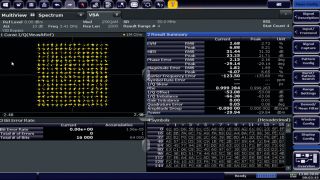Signal and spectrum analyzer technology | Error vector magnitude (EVM)
Understanding error vector magnitude (EVM)
Author: Paul Denisowski, Test & measurement expert
Many digital modulation schemes are based on “symbols,” which are unique combinations of amplitude and/or phase values. Each symbol represents certain bit patterns. In practice, however, the measured symbol points don’t usually fall exactly on the ideal reference points. This can happen for many reasons. If a measured point is too far from the reference point, that symbol or point may be interpreted incorrectly, and bit errors will occur. The greater distance from the reference point, the greater the probability of bit errors. Error vector magnitude (EVM) is the most common way to quantify this distance between the measured and reference points.




















